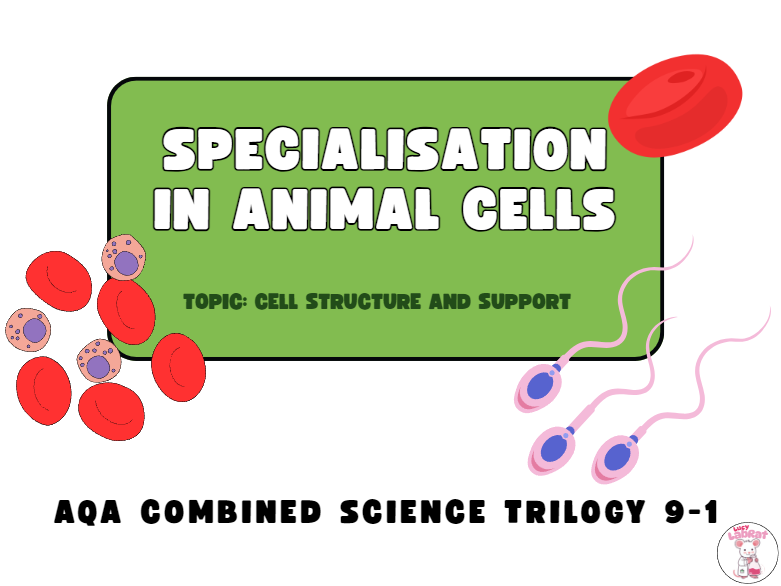









This lesson follows the AQA Combined Science Trilogy specification (spec link: part of 4.1.1.3 - 4.1.1.4) and aligns with B1.4 in the Kerboodle book. It is suitable for both Combined and Separate Science classes and is ideal for KS3 or KS4 learners.
What’s Included: (29 slides and a worksheet)
- Do now retrieval task on organelle functions
- Clear explanation of what cell specialisation means and why it occurs
- Real-life context tasks (Multiple sclerosis, heart failure, fertility issues) to deepen understanding
- Structured questioning for each cell type: function, adaptations, and how structure links to function
- Matching activity to consolidate understanding of structure–function relationships
- Data-based graph task with follow-up questions on energy demands of cells
- Multiple-choice quiz worksheet (included as a printable + answer version)
- Literacy plenary: 3 things I learnt, 2 key words, 1 question I still have
- Homework task: Write a Year 7-friendly article titled “Why your cells are built for the job” – includes scaffolded expectations
- Answer slides included for all major questions and tasks
Perfect for developing scientific literacy, strengthening retrieval skills, and building long-term understanding of key cell adaptations.
HAPPY TEACHING!
If you have any feedback, feel free to contact lucylabrat@gmail.com
Something went wrong, please try again later.
This resource hasn't been reviewed yet
To ensure quality for our reviews, only customers who have purchased this resource can review it
to let us know if it violates our terms and conditions.
Our customer service team will review your report and will be in touch.